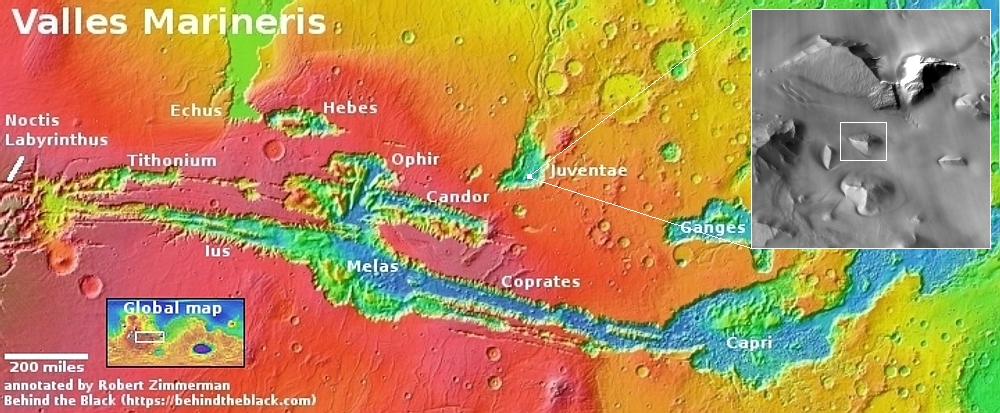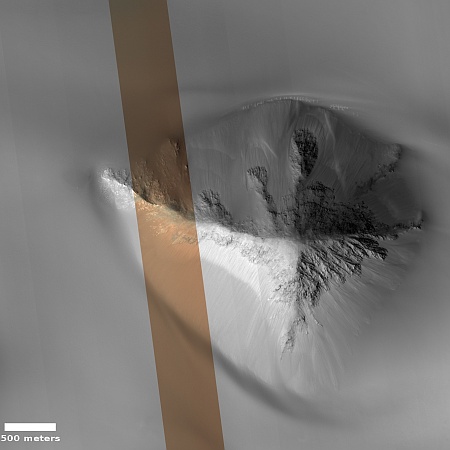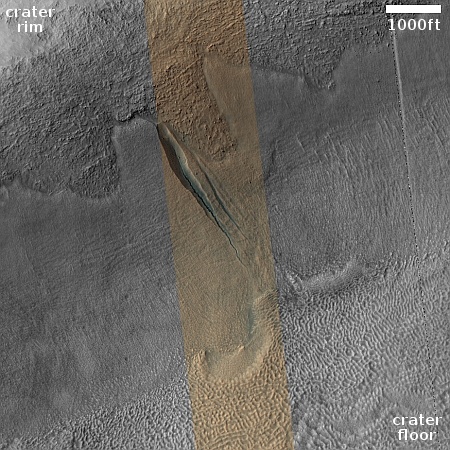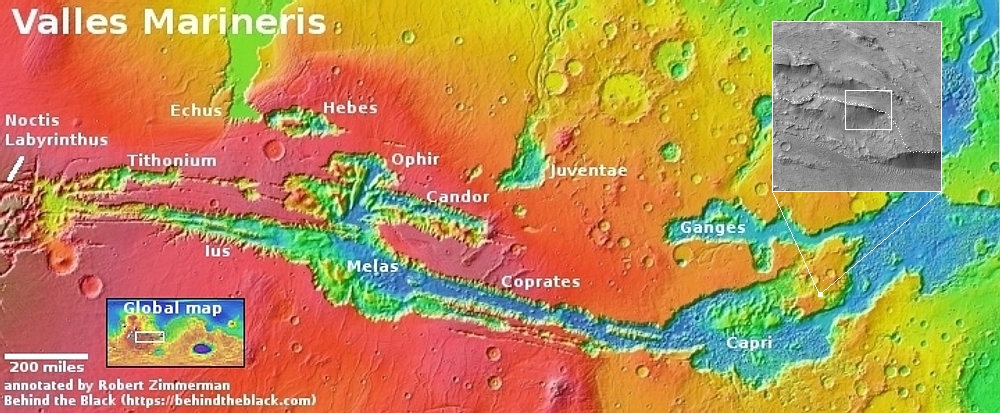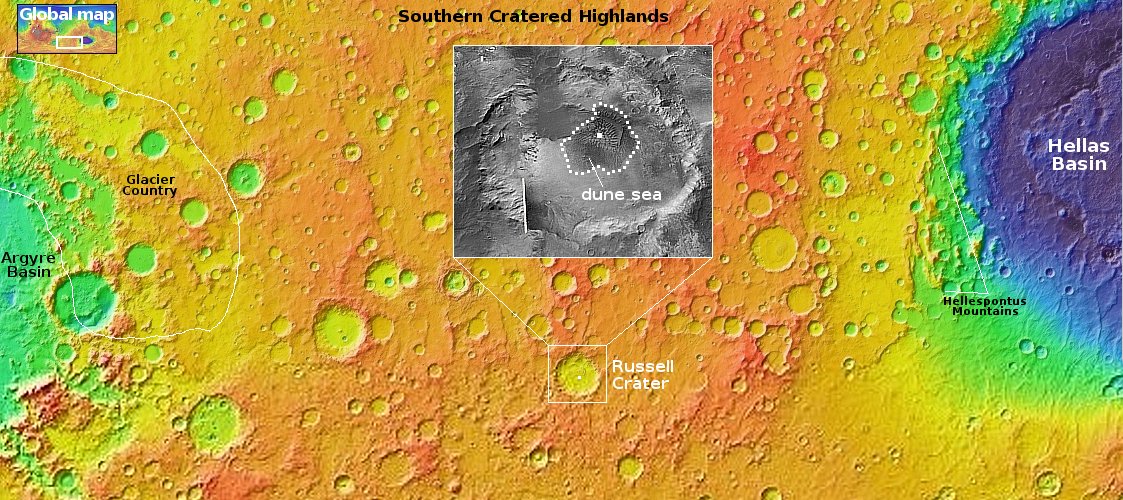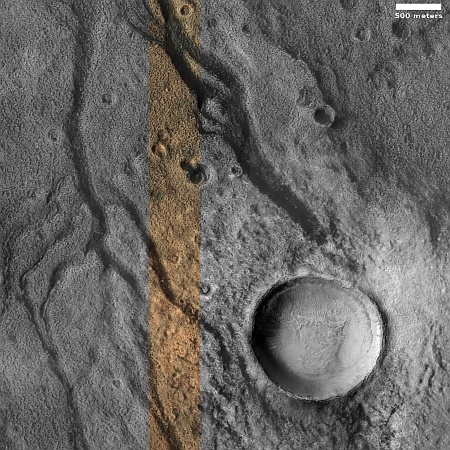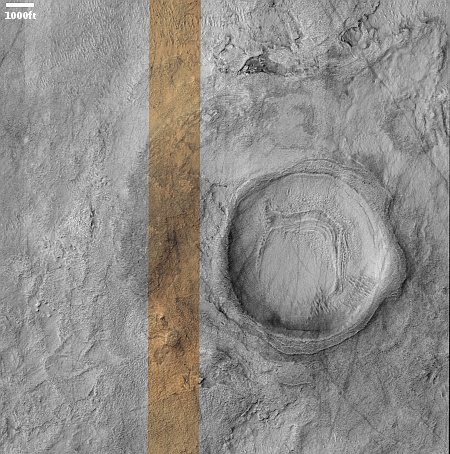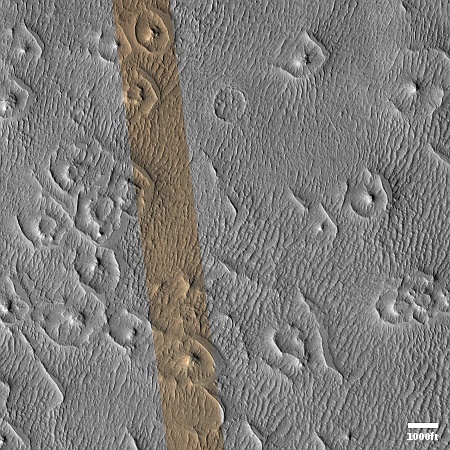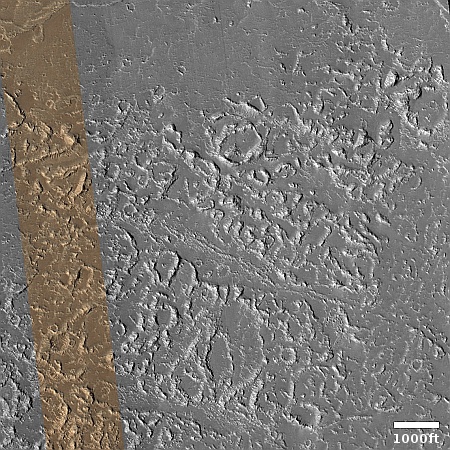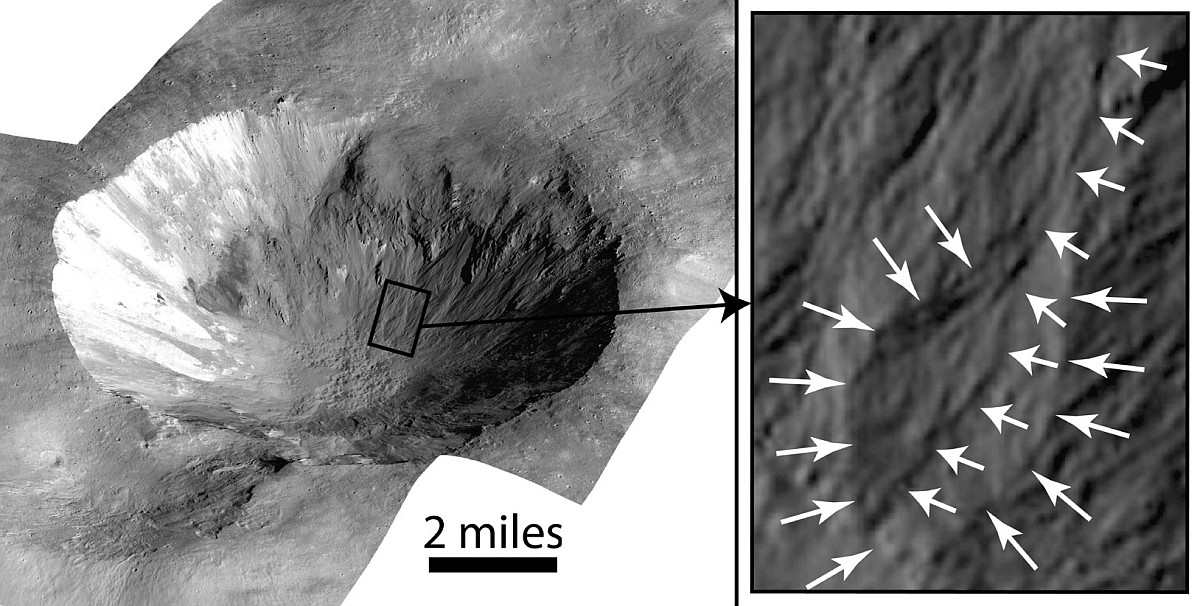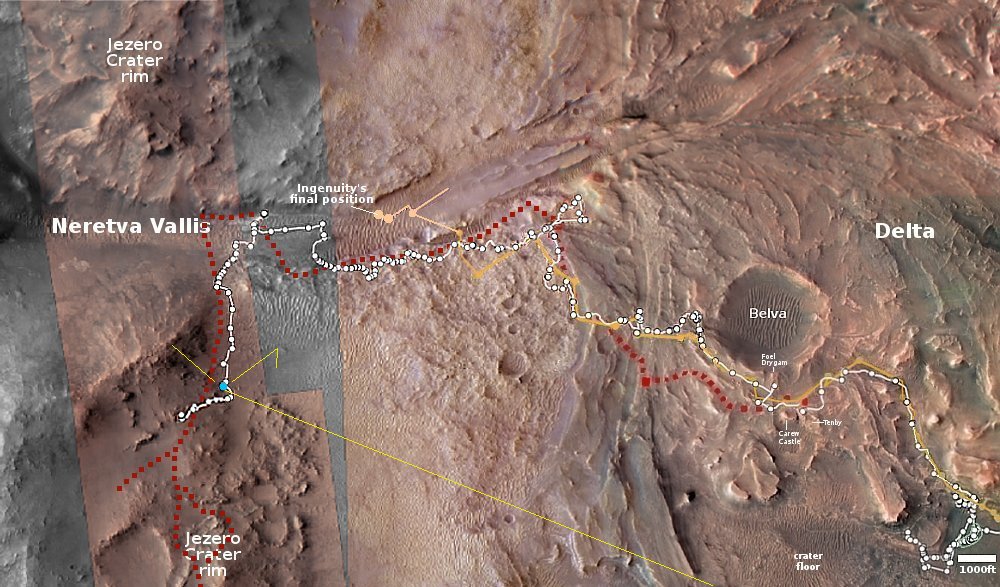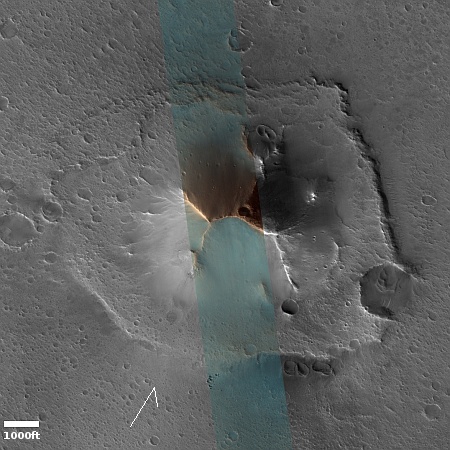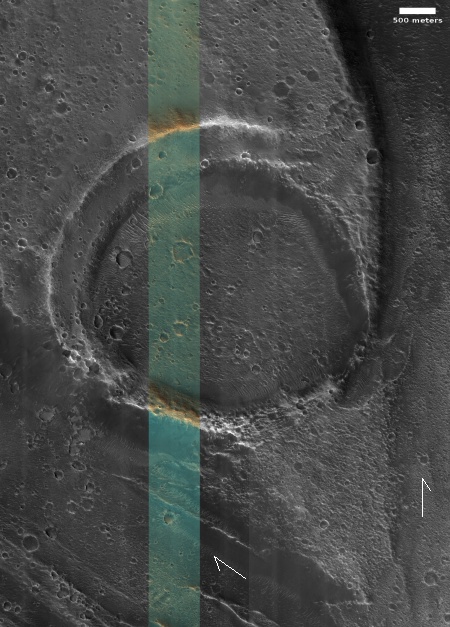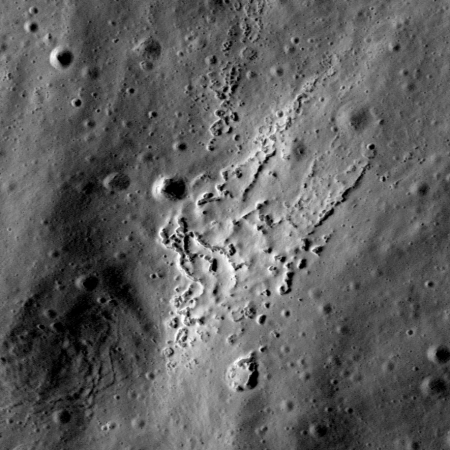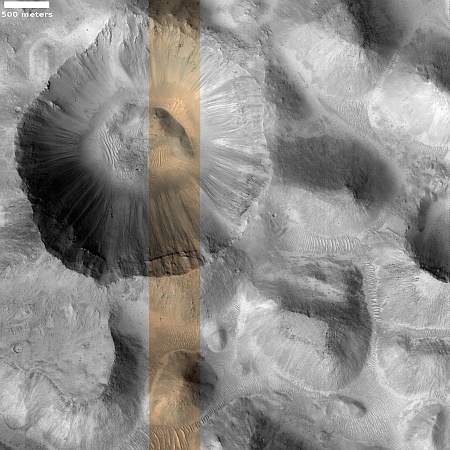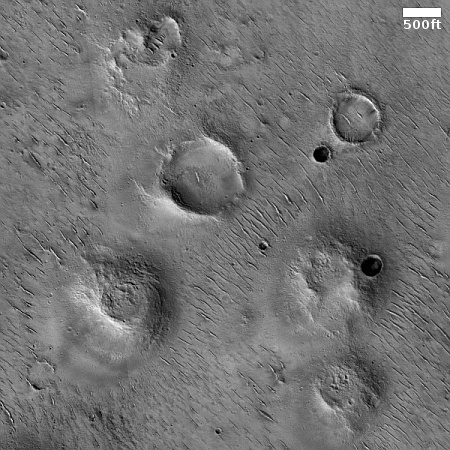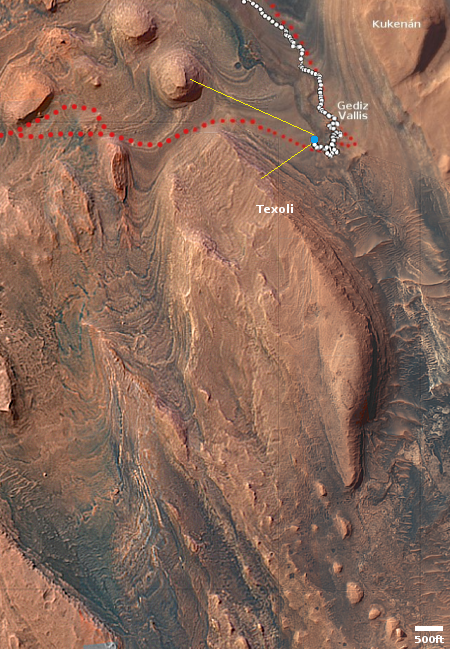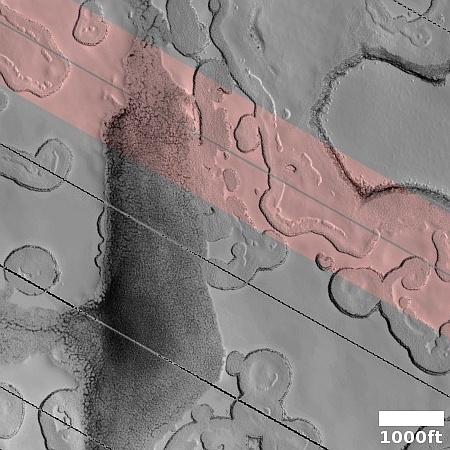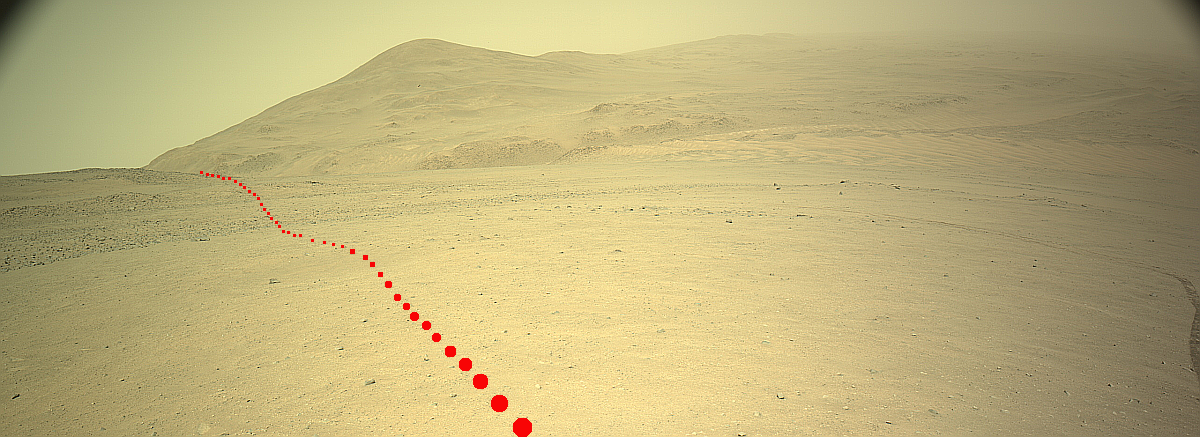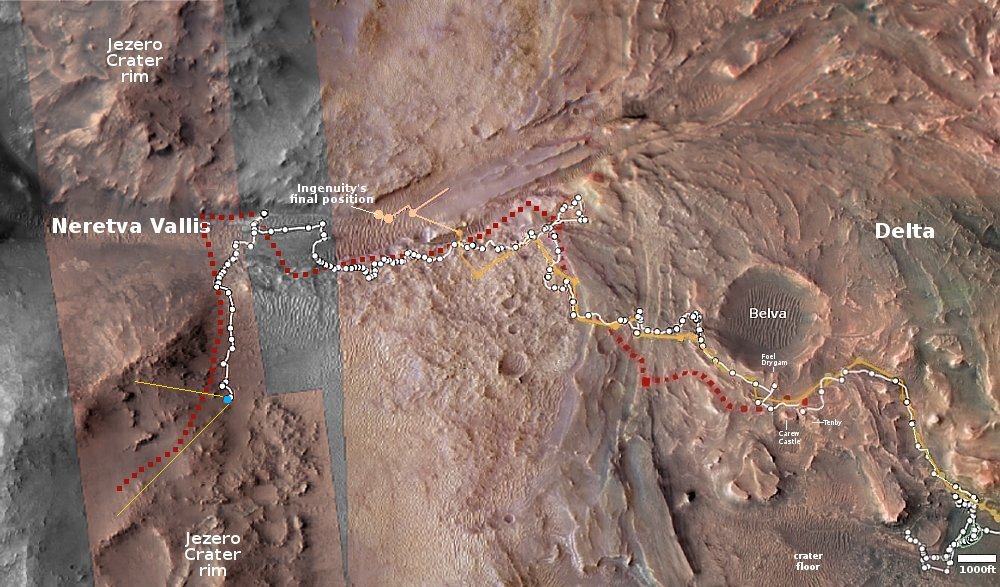Etched terrain on Mars
Today’s cool image is another example of what I call a “What the heck!” image. The picture to the right, simply cropped to post here, was taken on September 22, 2024 by the high resolution camera on Mars Reconnaissance Orbiter (MRO).
It shows what the scientists label as “etched terrain,” an incredibly twisted and eroded landscape that to me actually defies description. In trying to research what scientists have learned and theorized about this terrain, it appears they think it is material that flowed over older terrain (thus its lack of many craters) that was subsequently eroded by later processes.
Why it eroded so strangely however is not really understood. It could have been caused by near-surface ice sublimated to the surface and thus causing many breaks, but since this terrain is located right on the equator in the dry tropics, it is a very long time since water was present here.
» Read more
Today’s cool image is another example of what I call a “What the heck!” image. The picture to the right, simply cropped to post here, was taken on September 22, 2024 by the high resolution camera on Mars Reconnaissance Orbiter (MRO).
It shows what the scientists label as “etched terrain,” an incredibly twisted and eroded landscape that to me actually defies description. In trying to research what scientists have learned and theorized about this terrain, it appears they think it is material that flowed over older terrain (thus its lack of many craters) that was subsequently eroded by later processes.
Why it eroded so strangely however is not really understood. It could have been caused by near-surface ice sublimated to the surface and thus causing many breaks, but since this terrain is located right on the equator in the dry tropics, it is a very long time since water was present here.
» Read more




